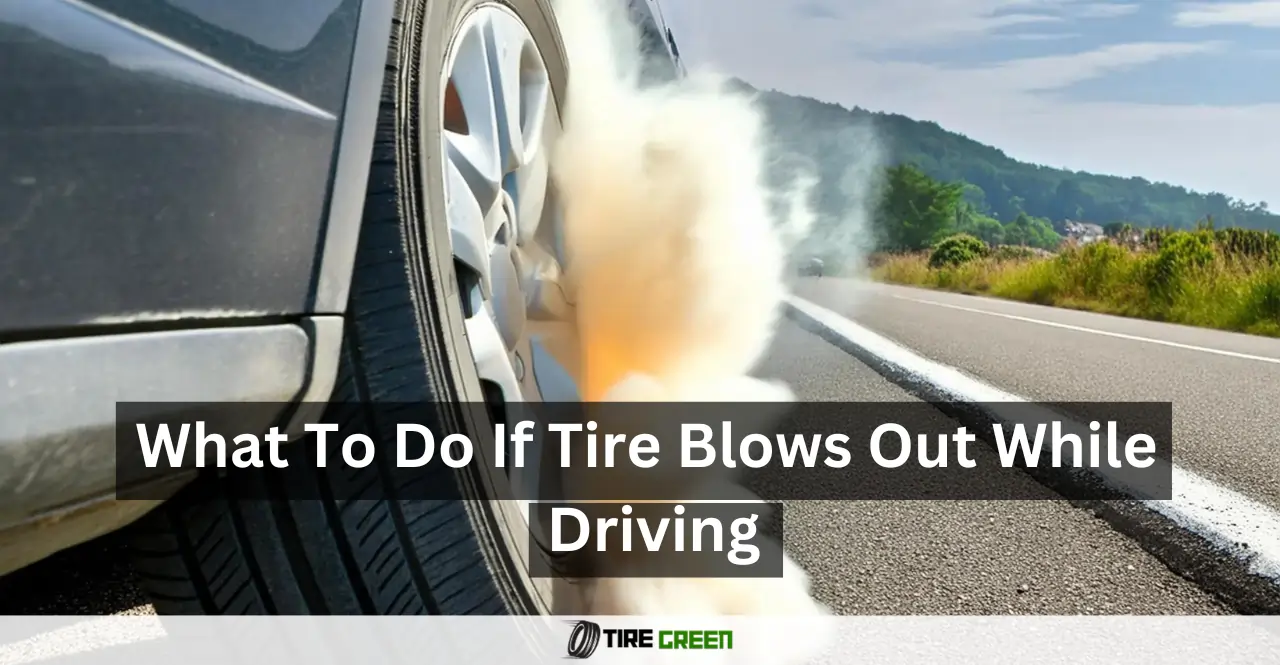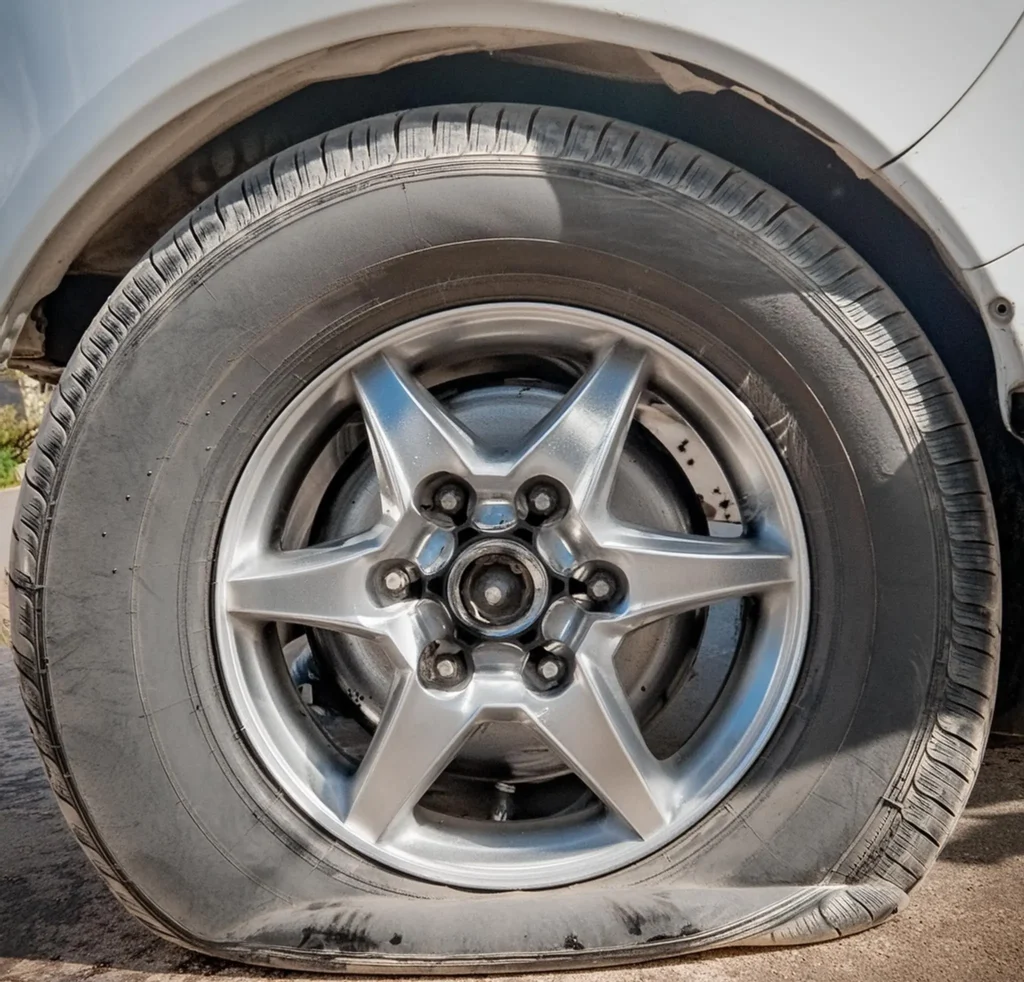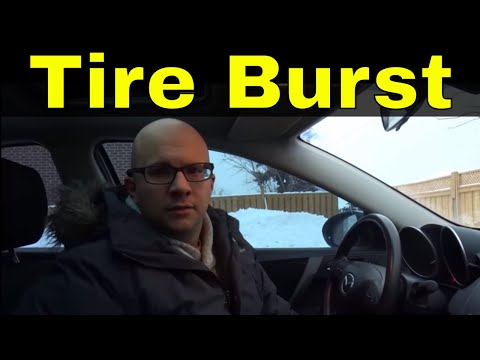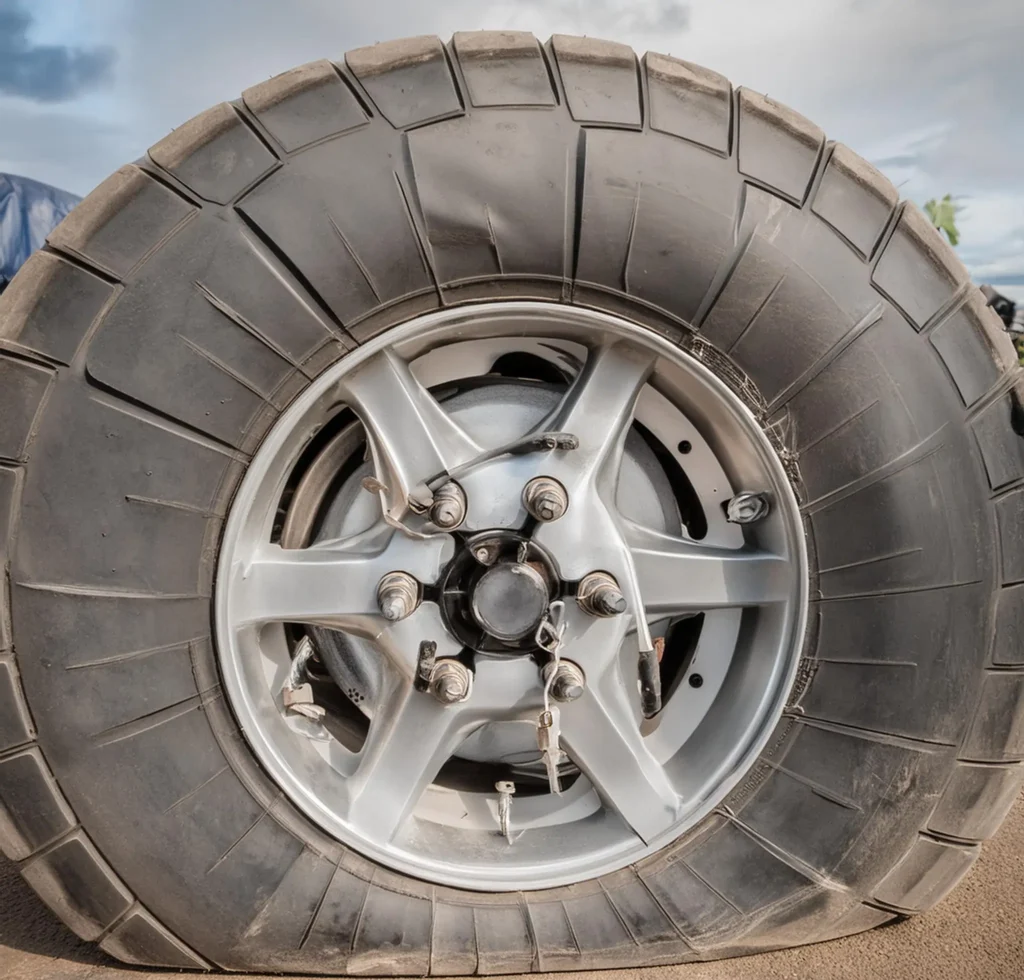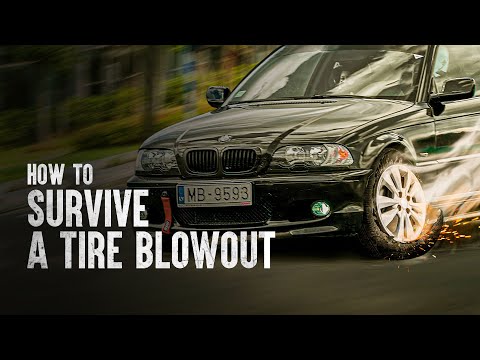What To Do If Tire Blows Out While Driving?
If you are cruising on the freeway or highway and have a tire blowout, the sudden vibration and wobbling of your car might scare you.
Even if panic sets in, the good news is that knowing what to do can help you handle this tough skill. When you face a tire blowout at highway speed, you must stay calm and learn how to handle things to get through this situation smoothly.
Firstly, if your front tire blows out, you should handle the steering wheel carefully to avoid doing nothing that could cause more trouble.
If your rear tire blows out, it is best to pull to the left or right safely, depending on the cars around you and the road. It’s the proper thing not to hit the brakes hard but to let the car slow down on its own while you keep it under control.
Moving the steering wheel back and forth may be needed to keep your car stable. Learning this way of handling a tire blowout is a tough skill, especially if you don’t know how to deal with such sudden trouble effectively.
Why do tires suddenly burst (tire blowout)?
A tire blowout can make a calm driver turn very scary fast, especially if it happens at high speed in the summer when the pavement is hot.
One big reason is incorrect tire pressure. If a tire is underinflated, it flexes more than it should. This extra bending makes the rubber heat up.
Overheated tires are more likely to burst. Low tire pressure puts too much stress on the tire’s internal structure, which includes steel cord reinforcement, and it isn’t meant to handle that much stress.
Another reason for tire blowouts is how old the tires are. Old tires might have cracks in the rubber, and if the treads are worn out, it’s a big problem waiting to happen.
These problems might make the tire break away from its normal shape and not work right. Watching how your tires look and making sure they have enough air helps lower the chance of a tire blowout, keeping your car safe and easy to drive on the road.
See also: Can You Mix Nitrogen And Air In Tires? | How Far Can Your Tires Stick Out Past Your Fenders Costco Tire Rotation Cost 2024
Steps to Handle a Tire Blowout
- Grip the Wheel: Hold the steering wheel with both hands to maintain the highest level of control over the vehicle. It helps prevent the car from swerving unexpectedly.
- Let Off the Gas: Do not panic. Remove your foot from the accelerator gently to allow the car to slow down naturally. Avoid the brakes as sudden braking can make the vehicle more difficult to control.
- Pull Over: Once you have the car under control and are traveling at a reduced speed, start looking for a safe spot to pull over. Change lanes carefully towards the outside lane of the road if necessary.
- Turn on Hazard Lights: As you move towards the side of the road, activate your flashers to alert other drivers that you are having trouble and to make your intentions visible.
- Set the Parking Brake: After coming to a complete stop in a safe place, apply the parking brake to secure the vehicle and prevent any further movement.
- Stay Calm: Throughout the situation, it’s important to stay calm and focused. Keeping a clear head helps you manage the situation more effectively and ensures safety.
- Check the Road: Before exiting the car, make sure it’s safe to do so, keeping an eye on the traffic to avoid any additional hazards.
This concise list covers essential steps to ensure that handling a tire blowout becomes a controlled procedure rather than a panic-driven reaction, emphasizing safety and control over the vehicle.
How to avoid a blowout?
Check your tire pressure: It’s very important to keep an eye on your tire pressure, especially when it gets hot in the summer. Use an online tire pressure tool to make sure your tires are filled to the vehicle’s recommended tire pressure. It helps stop your tires from getting too full or not full enough. Cars made after 2007 have a system that tells you if your tire pressure is wrong, but if your car is an older model, you’ll need to check it yourself.
Inspect Tires for Wear and Damage: Always look at your tires before you drive, especially if you’re going into tough weather or going on long trips. Look for any cracks in the rubber or other signs that the tires are worn down, which makes them more likely to burst.
Avoid Overloading Your Vehicle: Putting too much weight in your car puts extra stress on your tires. This can make them get hot and raise the chance of a blowout. Always keep the weight within the limits your car can handle to keep the tire pressure right and stop serious damage to your tires.
By doing these things, you can help stop a blowout and make sure you have a safer, smoother ride in your car.

